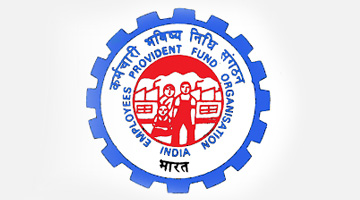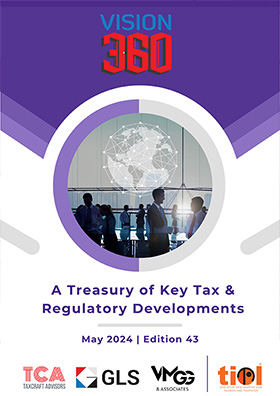APRIL 08, 2019
By Dr. G. Gokul Kishore
 CARVING out special dispensation for a sector or commodity is not new under tax laws. Realty sector now has the distinction of being recognized with such carve-out. Certain major changes made through notifications dated 29-3-2019 and connected issues are discussed in this 32nd part. CARVING out special dispensation for a sector or commodity is not new under tax laws. Realty sector now has the distinction of being recognized with such carve-out. Certain major changes made through notifications dated 29-3-2019 and connected issues are discussed in this 32nd part.
De-cluttering rate notification - Time to enact GST Tariff
To implement the decision of 1% GST rate for affordable residential apartments and 5% for other apartments, the basic services rate notification viz., Notification No. 11/2017-Central Tax (Rate) has been amended. Before amendment, this basic notification, as per the first entry, provided for effective rate of 12% for construction services after abatement of one-third value towards land. Now this entry has been substituted by Notification No. 3/2019-Central Tax (Rate) by seven new entries. All these entries are almost similar and they cater to different types of construction like those for affordable segment, residential apartments other than affordable segment, construction in Residential Real Estate Project (RREP) and those in Real Estate Project (REP), commercial apartments, etc. More entries have also been necessitated due to the fact that old rates can be opted for in respect of on-going projects. To cover those projects having mix of affordable and other type of apartments, separate entry has to be provided.
All these entries have to be accompanied by plethora of conditions as briefly discussed by us in Part-XXX. All the first five entries have common conditions with the foremost being ITC restriction for the obvious reason that these entries attract lower rate of tax. Then there are conditions like apportionment of credits for the purpose of reversal, liability of developer-promoter to pay tax on construction service when development rights are received from landowner-promoter, payment of tax under reverse charge when purchases from GST-registered vendors go below 80% limit, etc.
When new terms are used, they need to be defined as well. Therefore, either by referring to Real Estate (Development and Regulation) Act, 2016 (RERA) or by providing new definitions, the notification reads like a mini-statute. While REP is defined under RERA, RREP is new to cover those residential projects with commercial apartment as well but their carpet area is below 15% of the total carpet area in the REP. As the reduced rate of 1% is for affordable housing, the same has also been defined with differential criterion for metro (upto 60 sq. mtr.) and other cities (upto 90 sq. mtr.) but with the same value cap of Rs. 45 lakhs. Transfer of development rights (TDR) in certain situations is being taxed and, therefore, value of such TDR has also been defined. Peculiar definitions include that of developer-promoter (typically the builder) and landowner-promoter (who receives constructed flats against TDR and sells such flats).
After numerous amendments in the past 21 months, the notification providing for tax rates on services is becoming a head-spinner. With cross-references to other entries by use of alphabets, one has to scroll up and down or flip pages multiple times to reasonably understand the effect of an entry. Instead of inserting huge number of new entries in the same notification, it is time for the tax administration to come out with alternatives for legislation governing the rate regime. When a particular sector is entirely covered by a different sub-regime, a separate notification should be issued. Ideally, there should be a GST Tariff with schedules and such Tariff should ideally be a parent statute. All such notifications should be issued under such Tariff Act as is the case with Customs and Central Excise. This will de-clutter the rate notifications like Notification No. 11/2017-Central Tax (Rate) for services and Notification No. 1/2017-Central Tax (Rate) for goods. Exemption notifications also need not be a single notification as over time, with numerous insertions, omissions and substitutions, they become long-winding and intractable.
The choice is between complicated multiple entry single notification or simpler, lesser entry multiple notifications. If the tax is good and simple as projected, then the latter is to be preferred. We hope the GST Council examines such proposal. Tariff rates always denote the prescribed higher rate or the ceiling and effective rates are generally governed by exemption notifications providing for either concessional rate or exemption. Such notifications are issued routinely by the tax administration. Therefore, the present practice of GST Council recommending a rate reduction or exemption and implementation of the same by way of notification are not seen as a challenge even when they are issued under GST Tariff Act. This will also obviate the need to have the classification code for services in the form of an annexure as it can be integrated in the Tariff Act itself. For goods, reference to the Customs Tariff can be retained to prevent the Tariff from becoming a voluminous work.
TDR, RCM, Compulsory option - Complex changes
Liability of transfer of development rights to GST is not beyond doubt. The issue is under challenge in Bombay High Court [Writ Petition No. 3357 of 2018 - 2018-TIOL-2935-HC-MUM-GST. Though time of supply was prescribed earlier [Notification No. 4/2018-Central Tax (Rate)] for such activity under area-sharing model where constructed apartments are provided by the builder to landowner supplying development rights, the fundamental issue as to whether such exercise amounts to tax on land will have to wait till the Supreme Court answers the same in future. In the present set of changes, Notification No. 4/2019-Central Tax (Rate) grants exemption to TDR by prescribing the condition on payment of tax under reverse charge by the promoter in respect of TDR to the extent of un-booked apartments even after receipt of completion certificate (CC). As liability precedes exemption, the understanding of the department appears to be clear as to TDR being liable to GST. To make the task easier for tax collection, such situation where TDR is liable to tax has been brought under reverse charge mechanism and the promoter is liable to pay tax under such RCM.
The entire set of changes was announced to provide relief to real estate sector suffering from mounting unsold inventory. As transfer of development rights after 1st April, 2019 but before receipt of completion certificate is sought to be taxed now by tagging it with unsold inventory, it is not known whether industry will be benefitted. Sale of units before CC is entirely market-driven and making transactions as liable to tax based on such vagaries of market may not provide certainty in terms of project cost and the same will adversely impact reasonableness and objectivity in pricing.
As anticipated in Part-XXX, powers under the newly substituted Section 9(4) of the amended CGST Act for bringing procurements from unregistered persons under RCM has been used in the present set of changes. Mandatory limit of 80% has been fixed for purchases from suppliers registered under GST. In case of shortfall i.e. purchases from unregistered suppliers exceed 20%, GST is liable to be paid by promoters under RCM. This should be seen as precursor as those sectors which are perceived as less-compliant in future, may also be brought under such or similar conditions. A positive outcome could be a fillip to efforts to mainstream the unorganized supplying goods in construction industry as they may be compelled to obtain GST registration to continue to be the suppliers for promoters.
In the Cenvat credit regime, cement was singled out along with items alike angles and channels for restricting credit. In the new sub-regime also, cement has been identified for separate treatment as purchase of cement from unregistered suppliers have been brought under RCM. This will apply even if the condition on 80% limit is satisfied as explained in annexure to Notification No. 3/2019-Central Tax (Rate). Cement dealers may not be, in general, unregistered. This measure seems to be intended to curb the practice of purchasing without proper tax invoice which is seen as widely prevalent in the construction industry. When rate is reduced, anti-profiteering provision applies. But when ITC is lost, net effect is to be analysed. If it is positive i.e. effect of rate reduction is more than ITC loss, benefit of such reduction is required to be passed on to recipient.
Generally, option means choice among multiple alternatives. However, in tax law, it may not be necessarily so. In respect of on-going projects, to retain ITC, if tax is to be paid under old rate, then option should be exercised before 10th May, 2019 through prescribed form. Otherwise, it will be deemed that the promoter has opted to pay tax under the new rate sans ITC. Deeming something as opted for when such an option is not exercised can happen only in tax law. Industry should, however, thank the administration for providing a window for transition with both protection of ITC on on-going projects and sufficient time of 40 days to make up their mind on use of old rate. After all these complex changes, the agenda should be facilitation of compliance by the industry and riding roughshod should be avoided. We hope the second and third years of GST are used for the same.
(…To be continued)
[The author is an Advocate and Joint Partner, Lakshmikumaran & Sridharan, New Delhi. The views expressed are strictly personal.]
See Part XXXI
| (DISCLAIMER : The views expressed are strictly of the author and Taxindiaonline.com doesn't necessarily subscribe to the same. Taxindiaonline.com Pvt. Ltd. is not responsible or liable for any loss or damage caused to anyone due to any interpretation, error, omission in the articles being hosted on the site) |
|









 Download PDF
Download PDF CARVING out special dispensation for a sector or commodity is not new under tax laws. Realty sector now has the distinction of being recognized with such carve-out. Certain major changes made through notifications dated 29-3-2019 and connected issues are discussed in this 32nd part.
CARVING out special dispensation for a sector or commodity is not new under tax laws. Realty sector now has the distinction of being recognized with such carve-out. Certain major changes made through notifications dated 29-3-2019 and connected issues are discussed in this 32nd part. 



